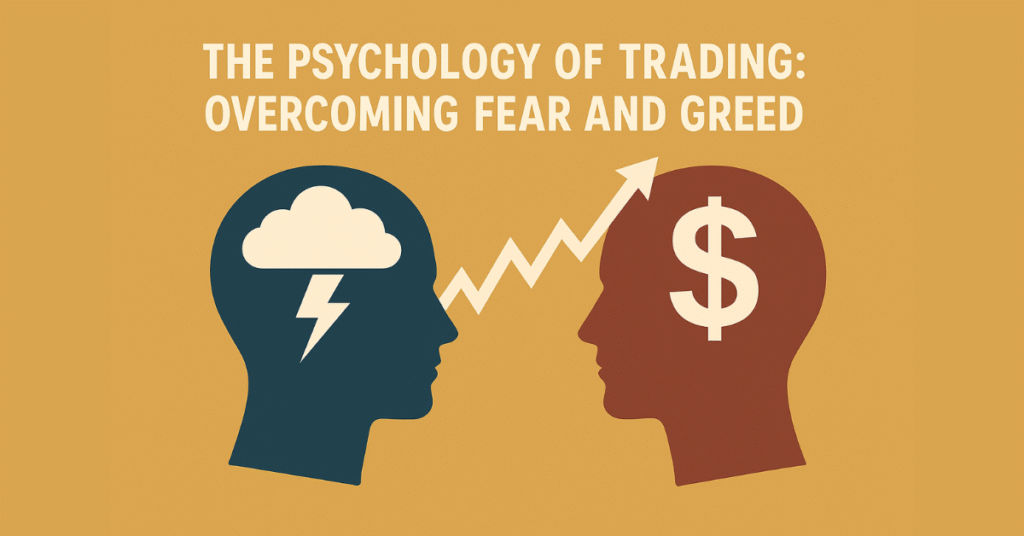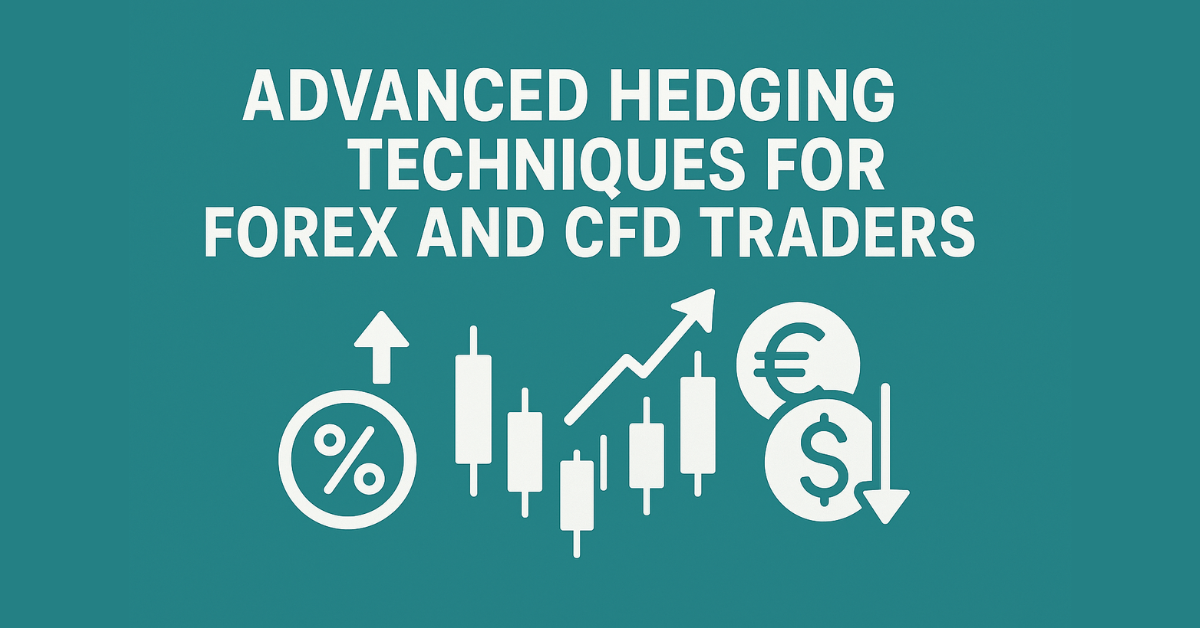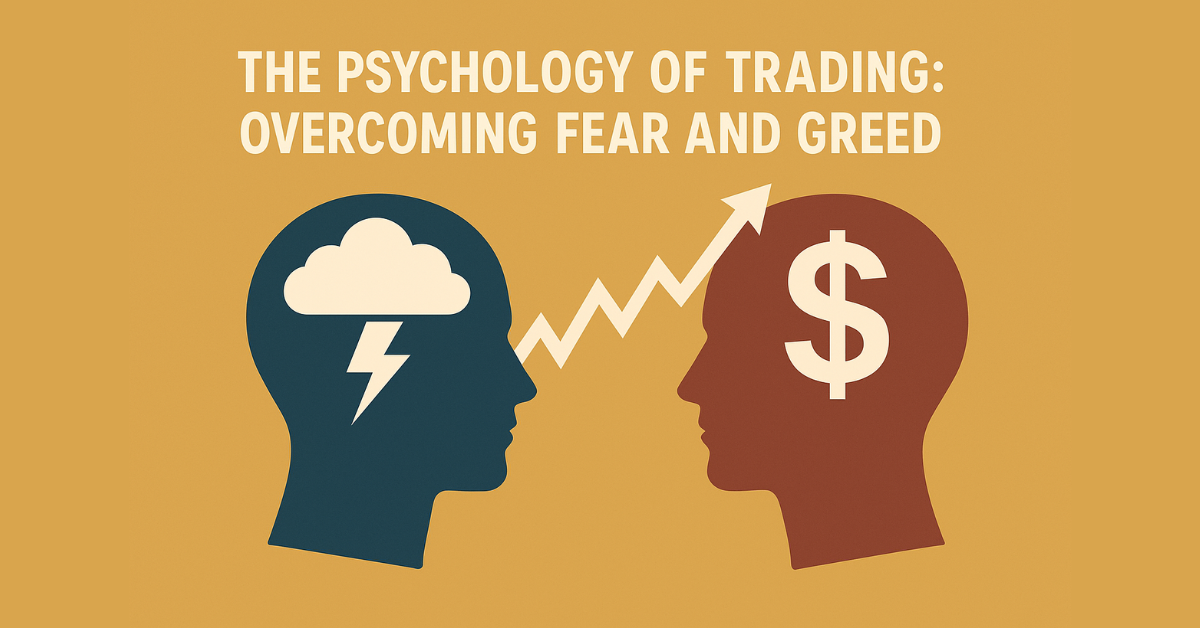
Introduction
Trading is not only about charts, numbers, and indicators. It is also about emotions. Fear and greed are the strongest feelings that affect how traders think and act. Even experienced traders struggle to stay calm when prices change quickly. Understanding how emotions drive behavior helps traders control risk and make clearer decisions.For a deeper look into structured methods and strategies, you can read our Comprehensive Guide to Forex Risk Management to learn practical ways to reduce trading risk and manage losses effectively.
This article explains how fear and greed influence risk management and how strategies such as copy trading can help manage these emotions. It also answers key questions many new traders ask, including does copy trading work, is copy trading legit, how safe is copy trading, and what is the downside of copy trading. The goal is to provide clear insights for trading coaches, beginners, and companies developing social trading tools.
Understanding Fear and Greed in Trading
Fear: The Emotion That Freezes Action
Fear makes traders hesitate. They worry that entering a trade might lead to loss. Sometimes, a trader sees a strong setup but waits too long, missing the opportunity. Fear can also cause traders to close trades early just to avoid the pain of losing.
Common fear-driven mistakes include closing trades too soon, avoiding trades after a loss, or selling too quickly when the market dips. Fear stops traders from following their strategies. It replaces logical thinking with emotional reactions.
Greed: The Desire That Blinds Judgment
Greed does the opposite. It makes traders take unnecessary risks. After a few wins, greed can make someone overconfident, leading to bigger trades and careless behavior.
Typical greedy actions include ignoring stop-loss rules, trading too frequently, or holding positions too long hoping for bigger profits. Greed gives traders the illusion of control, but it often ends with major losses when the market moves against them.
Emotional Traps That Increase Trading Risk
Emotions often create repetitive behavior that increases exposure to risk. The most common psychological traps include:
- Revenge trading: Trying to recover losses quickly after a losing trade.
- Confirmation bias: Searching for information that supports an existing belief instead of seeing facts objectively.
- Loss aversion: Refusing to take small losses and ending up with larger ones later.
- Herd mentality: Following the crowd without understanding the reason behind market moves.
Each of these habits weakens decision-making and leads to inconsistent results. You can explore more about trading risk strategies that help minimize exposure and strengthen consistency under emotional pressure.
Over time, traders who let emotions control them struggle to stay profitable.
How Copy Trading Fits Into Modern Risk Management
What Is Copy Trading
Copy trading allows one trader to automatically follow and replicate another trader’s actions. When the lead trader buys or sells, the same happens in the follower’s account. This feature is popular on social trading platforms that show performance data of expert traders.It also complements traditional forex risk management techniques by combining automation with diversified strategy exposure.
Copy trading helps beginners learn faster and reduces the stress of making constant decisions. It is also useful for traders who want exposure to different strategies without having to manage everything manually.
Does Copy Trading Work
Yes, copy trading can work if used wisely. Success depends on selecting skilled traders, managing risk properly, and having realistic expectations. It is not a shortcut to guaranteed profit. Instead, it is a tool that supports learning and emotional control.
To make copy trading work, traders should:
- Review historical performance before choosing a trader to follow.
- Diversify across multiple leaders to reduce risk.
- Monitor copied trades and adjust settings when necessary.
When used correctly, copy trading helps reduce emotional pressure and promotes more disciplined trading behavior.
Is Copy Trading Legit
Yes, copy trading is legitimate when done through regulated platforms. Many licensed brokers and fintech companies offer social trading features within official frameworks. Traders must always verify that the platform holds a financial license and follows transparent practices.
A legitimate copy trading platform will:
- Display real performance data of traders.
- Offer clear risk warnings.
- Provide secure fund management.
Legitimacy depends on the company’s regulation and reputation, not the copy trading concept itself.
The Psychology of Trading Edge of Copy Trading
Learning Through Observation
Watching experienced traders in action helps beginners understand timing, patience, and discipline. Instead of learning only from theory, they see real decisions made under market pressure. This form of learning builds confidence and reduces fear.
Reducing Decision Fatigue
Trading requires constant attention. Making too many decisions in one day leads to stress and mistakes. Copy trading automates part of this process, helping traders avoid emotional burnout and impulsive reactions.
Encouraging Emotional Detachment
By following structured trading models, traders avoid reacting emotionally to short-term price swings. This emotional detachment helps them stay calm and focus on long-term growth instead of chasing quick wins.
How Safe Is Copy Trading
The safety of copy trading depends on the platform’s reliability, trader selection, and user settings. While no system removes risk entirely, safety improves when traders follow these rules:
- Choose a regulated platform with clear legal status.
- Analyze the lead trader’s performance over several months.
- Avoid traders with high drawdowns or extreme volatility.
- Use capital protection tools such as stop loss and maximum exposure limits.
Copy trading reduces the need for emotional decisions but still carries market risk. A well-structured risk management in forex plan is still essential to prevent overexposure and control potential losses.
Users must treat it as part of a complete trading plan, not as a guaranteed profit method.
What Is the Downside of Copy Trading
Even though copy trading offers convenience, it has disadvantages that every trader should understand.
- Dependence on another person’s strategy: If the expert makes mistakes, followers also lose.
- Limited control: Followers cannot always modify trades in real time.
- Reduced personal learning: Some traders stop analyzing markets once they rely on others.
- Technical problems: Network delays or system errors can affect trade accuracy.
To overcome these downsides, traders should combine copy trading with independent analysis. Learning should continue alongside automation.
Overcoming Fear and Greed Through Structured Thinking
1. Create a Trading Plan
A clear plan defines entry, exit, and risk limits before trading starts. When traders follow written rules, emotions have less influence.
2. Accept Losses as Normal
Losses are part of trading. Instead of feeling fear or anger, traders should see them as feedback. Reviewing losing trades helps improve future decisions.
3. Set Profit Targets and Stop-Loss Rules
Stop-losses and take-profit levels are key components of how to reduce risk in trading — they create emotional discipline and limit potential losses automatically.
4. Use Copy Trading as an Educational Tool
Copy trading is valuable when treated as a classroom. By observing how experienced traders manage risk, beginners learn discipline and technical skills.
5. Keep a Trading Journal
Recording emotions before and after trades reveals behavioral patterns. This helps traders notice how fear and greed affect their decisions. Over time, this practice improves self-control.
The Role of Technology in Managing Trading Psychology
Modern platforms now include tools that make emotional control easier. Automated stop losses, trade alerts, and performance tracking dashboards support better discipline.
Data-based systems help traders act rationally instead of emotionally. Copy trading also plays a role here. It allows traders to follow consistent strategies while learning to interpret data calmly.
Technology does not remove emotion entirely, but it helps traders recognize and manage it faster.
Why Emotional Control Equals Risk Control
Emotional control is directly connected to managing risk. Fear leads to missed chances. Greed leads to excessive exposure. Both damage consistency.
Risk management starts with self-awareness. Combining emotional stability with a solid understanding of managing trading losses ensures traders can protect their capital even during volatile market swings.
Traders who stay calm are better at following their systems. They know when to stop trading, when to take profit, and when to wait. Using structured approaches like copy trading supports this mindset by reducing the number of emotional decisions required.
Copy Trading for Companies and Trading Tech Firms
For fintech and trading technology companies, copy trading is more than a feature. It is a way to help users trade safely and confidently.
From a product management perspective, clear structure and transparency are critical. Platforms that provide open data on trader performance, risk metrics, and transaction records build stronger user trust.
Key benefits for firms offering copy trading include:
- Higher user retention because beginners can participate safely.
- Better data analytics that help improve algorithmic systems.
- Increased engagement as traders learn from one another.
Companies should design interfaces that make information easy to read. Every feature should aim to simplify user decisions and protect against emotional overreaction.
Building a Stable Trading Mindset
Long-term success in trading depends on developing mental stability. Traders can build this by creating routines, maintaining balance, and keeping expectations realistic.
Simple habits that help include reviewing trades weekly, taking short breaks after intense sessions, and discussing strategies with other traders or coaches. Over time, these actions make emotional control easier.
Conclusion
Fear and greed are part of human nature, but they can be managed through structure, awareness, and smart tools. Copy trading offers an effective way to reduce emotional mistakes while learning from experienced traders.
However, traders must stay engaged. Copy trading works best when combined with education and clear risk limits. The question does copy trading work has a simple answer: yes, when used responsibly and with discipline.
Is copy trading legit? Yes, if the platform is regulated and transparent.
How safe is copy trading? It is as safe as the platform and the trader you choose.
What is the downside of copy trading? You rely on others’ decisions and must still manage your own risk.
The key to success in trading is emotional balance. When traders manage their feelings of fear and greed, they protect their capital and improve decision quality. For step-by-step frameworks and proven trading risk management strategies, check out our full Comprehensive Guide to Forex Risk Management: From Basics to Advanced.Tools like copy trading make this process easier by combining technology with human learning, helping traders focus on steady growth instead of emotional reactions.






